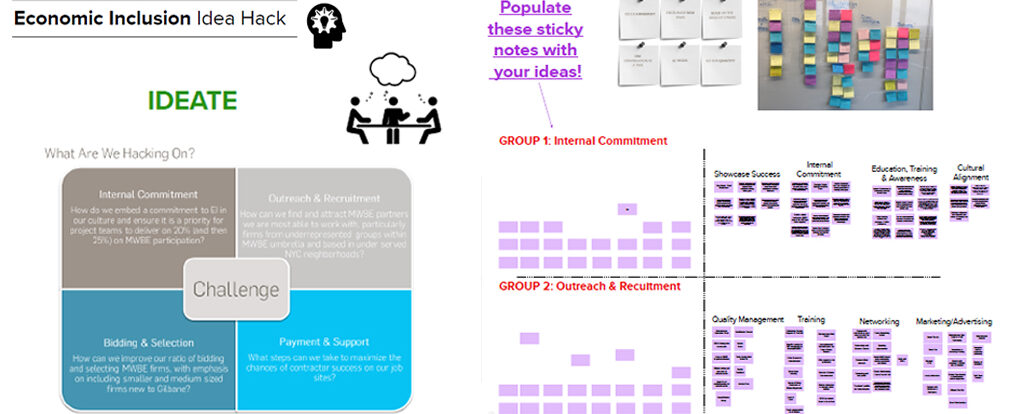While we’ve have had some major achievements in New York City, we’re always challenging ourselves to do better and that requires us to do things differently. But as the Japanese proverb goes: “Vision without action is a daydream. And action without vision is a nightmare.” We need to act, but we also need to plan. That was the impetus for our NYC Business Unit’s Economic Inclusion Task Force, which is comprised of employees from all parts of the business and backgrounds – from field staff to functional leaders – who volunteered to participate in developing comprehensive, collaborative, game-changing strategies for promoting economic inclusion.
But…with an aim that ambitious, where do you even start?
Enter an idea hack, which is traditionally used in the high-tech industry to bring together diverse skill sets to “hack” away at code and technical glitches in software. Borrowing this concept, we refined it to develop a different kind of programming—one focused on people rather than computers.
Our thought was that innovation efforts via a “hack-a-thon” would be an energizing exercise for the task force and serve as an enthusiastic first step on the road to developing successful strategies.
We sketched out the design of an idea hack session based on the principles of Design Thinking. Design thinking combines what’s desirable from a human point of view with what is technologically feasible and economically viable.

The baseline of the idea hack starts with clarity on the problems we are trying to solve and who we are trying to solve them for. Challenge statements were developed for each of the subcommittee teams to provide parameters around the ideas we wanted to harvest. The session utilized Lean methodology and multiple Innovation tools to generate a high volume of ideas without regard for practical considerations and end up with a more refined set of ideas that maximize the three I’s: Impact, Innovation and (ease of) Implementation. But that does not mean every refined strategy knocks it out of the park on all measures—there are very few ideas that do. Typically, ideas that survived did well on two out of the three I’s.
Using MURAL, a virtual ideation platform, the task force generated more than 80 ideas that were ranked and prioritized down to 20 high level concepts. After the teams presented their concepts, we used the impact value chart to narrow the top ranked ideas down even further. These ideas were further developed and recently pitched to the NYC leadership team nationally and regionally for feedback, buy-in and endorsement.
Aside from the strategies themselves, the session generated a sense of excitement, collaboration, and commitment among task force members. Since true economic inclusion requires an all-hands-on-deck approach, the impact of this cannot be understated. The power of innovation is truly inspiring when everyone gets a chance to participate in the process.


